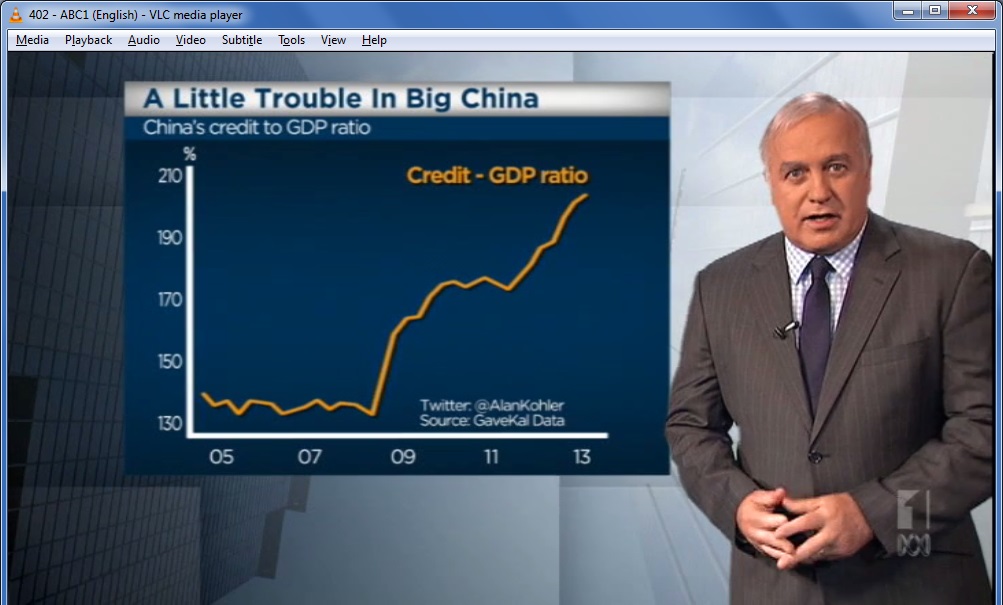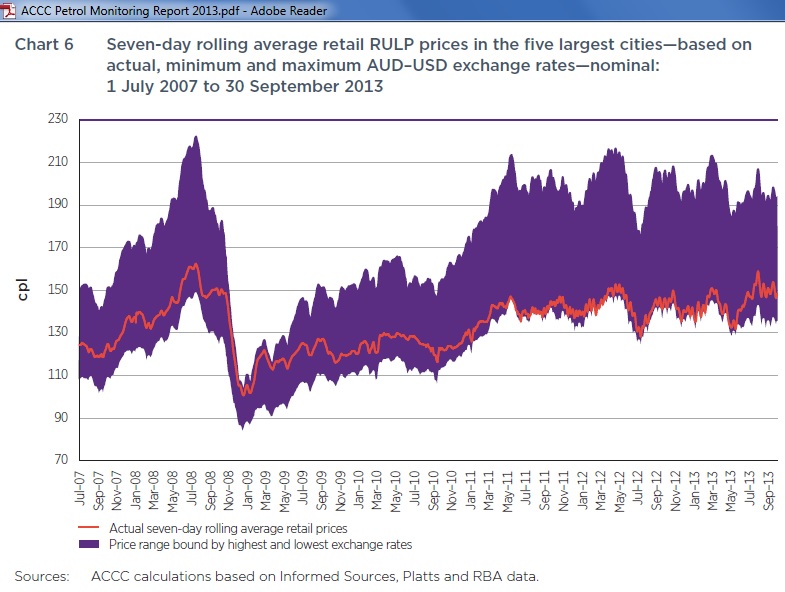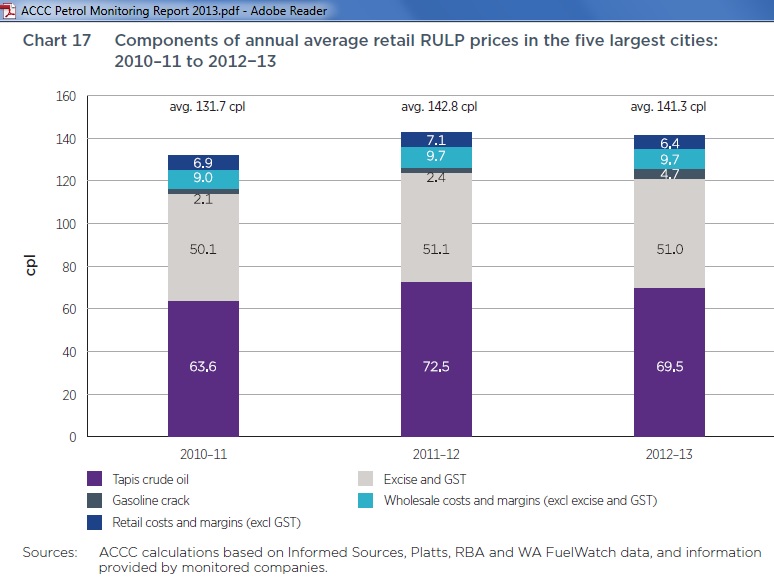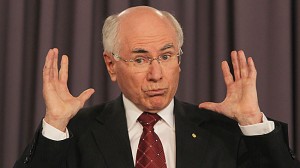Alan Kohler http://www.alankohler.com.au/ showed this AUD/USD exchange rate graph on the 7 pm news on ABC TV on Friday the 13th 2013, displaying a variance between 50c and 1 dollar. And earlier in the week we were reminded how the “China level” was achieved: by a credit boom the consequences of which we haven’t understood yet.
Note that the little trouble started in the year of the 2008 financial crisis which was triggered by the beginning of crude oil peaking around 73-74 mb/d in 2005.
China’s debt bubble aside, the AUD chart was a timely and fitting statistic for this call:
Tony Abbott urges Central Bank intervention on the dollar
13/12/2013
TONY Abbott has encouraged the Reserve Bank to consider a “prudent” intervention to drive down the dollar as manufacturers blame the currency for forcing them to cut jobs.
“Just as well that the Reserve Bank has been in effect recapitalised to the tune of $8bn because that enables the Reserve Bank to intervene prudently and appropriately in the market to try to ensure that the Australian dollar is at the best possible level,” he told parliament.
Reserve Bank governor Glenn Stevens used a major speech last month to canvass action in the market, saying it was “part of the toolkit” while noting that the bank was not convinced about the case for large-scale intervention.
Wait a minute. 2 days earlier the ACCC [Australian Competition and Consumer Commission] published its 2013 petrol report. In it, we find a chart what petrol prices would have been if the AU$ had stayed at its lower levels (upper part of the dark magenta area)
“Retail petrol prices were at their highest at the end of February 2013 and were around 151 cpl. The AUD–USD exchange rate was around USD 1.03 at this time. If the exchange rate had been at its six-year minimum level at this time (USD 0.61), retail prices would have been around 213 cpl (or 62 cpl higher)”
Imagine how the problem of congestion would be solved at these petrol prices.
Lucky twice
Excise and tax hasn’t changed much. That’s why:
JOHN Howard’s decision to freeze petrol tax in 2001 has cost the federal budget $25 billion over the past 11 years.
23/11/2012
And it will cost a further $23 billion over the next four years – enough to help pay for the national disability insurance scheme.
Figures provided to the Herald Sun by Deloitte Access Economics partner Chris Richardson reveal the revenue lost because of the petrol tax freeze has reached almost $5 billion a year.
Petrol tax would be 15c a litre higher today and it would cost motorists about $9 more to fill a typical 60 litre tank if the excise had continued to grow in line with inflation – as is the case for beer, spirits and tobacco.
Mr Richardson said freezing petrol tax was a “pretty dumb policy and a costly one at that”. “We have all these demands on the budget and we have a tax system that is not up to it and this is one of the reasons,” he said.
Mr Howard froze petrol tax at 38.1 cents a litre in the lead-up to the 2001 election when he faced political pressure over the introduction of the GST and the impact of the fuel tax.
At the time the measure saved motorists 1.5 cents a litre and cost the budget $555 million.
Given ever worsening budget deficits, Howard protege Tony Abbott will have some problems with this tax legacy of his mentor.
As a result of the China credit boom, a generally low fuel excise and Howard’s 2001 Federal election lolly Australia is now at the bottom of the OECD petrol price list, a blessing and a curse at the same time. A curse because necessary adaptation processes to higher oil prices in the economy and the transport sector in particular have been and are still being suppressed and delayed. This leads to mis-investments in oil dependent infrastructure.
The call for a lower AUD to rescue Holden’s Commodore came too late. Ironically, it would have backfired anyway as higher petrol prices would disadvantage big Australian cars.
Conclusion:
The lucky country with the help of some policy failures maneuvered itself into catch22 territory. Watch out what happens with traffic on toll-ways when the AU$ sinks.





